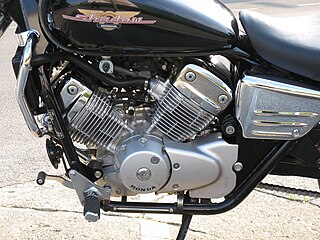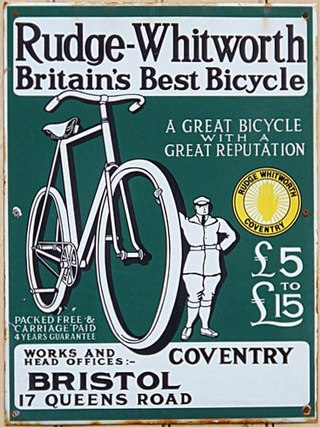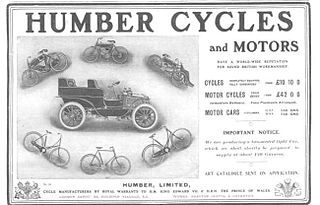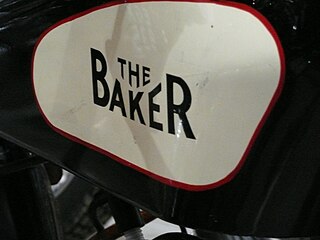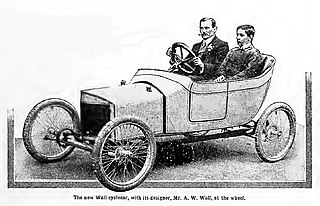Motorcycle engines
F.E. Baker sold engines to motorcycle manufacturers and to dealers under the Precision name, and for some of the larger customers they had their own name cast into the timing cover and the word Precision absent from the crankcase casting. An article in 1914 says that the Peerless Precision V-twin made solely for export was now to be made available in the home market 'under certain circumstances'. [5] Differences from the UK engines included round cylinder fins instead of square and an external flywheel. There was a thriving export market for Precision engines, especially in Australia, where companies like Lewis of Adelaide used the Precision engines. Engines were distributed through sole agents as follows :
A.G. Healing of Melbourne for Australia
Victor S. Welsford of Durban for South Africa, Rhodesia and Portuguese East Africa
J.B. Clarkson Ltd of Wellington for New Zealand is added to adverts from c1913
Whether F.E. Baker manufactured a complete motorcycle before WW1 is unclear, even though a 1912 Precision motorcycle is featured on an Australian postage stamp issued in 2018. It seems more likely the motorcycle was built by another manufacturer using a Precision engine and allowed to use the Precision name. Many Precision engined motorcycles used 'Precision' as part of the model name, hence Ivy-Precision, Grandex-Precision, etc. The 350cc 2-stroke announced in 1919, though, was a complete Precision motorcycle.
A remarkably wide range of engines was developed over just a few years - this list is mainly taken from the home market motorcycle engine catalogue circa 1913 (except where otherwise indicated) so does not include variants specific to the overseas market, or the engines adapted for cyclecar use which had modifications like alternative magneto locations.


| Model | Capacity | HP Rating | Bore x Stroke (mm) | Notes |
|---|---|---|---|---|
| Junior | 170cc | 2 | 60 x 60 | Introduced Nov 1913, an unusual 4-stroke single with unit-construction and horizontal valves at the rear of the engine |
| Junior | 199cc | 2 | 65 x 60 | 1915 update, with bore increased to 65mm and vertical side-valves at the rear of the engine |
| ? | 225cc | 2 1/2 | 64 x 70 | 2-stroke Appears in Nov 1914 Buyers guide for 3 makers, and Nov 1915 Buyer Guide solely for Grandex |
| M | 293cc | 2 3/4 | 70 x 76 | Lightweight Touring 4-stroke side-valve single |
| MTT | 350cc | 2 3/4 | 70 x 90 | Lightweight T.T. 4-stroke side-valve single |
| MO | 350cc | 2 3/4 | 70 x 90 | 4-stroke overhead-valve single |
| ME | 350cc | 2 3/4 | 70 x 90 | "Green" 4-stroke water-cooled side-valve single (Gustavus Green designed cooling) 5 bhp guaranteed |
| ? | 350cc | The new 2-stroke single engine fitted to the Precision motorcycle announced in 1919 | ||
| D | 499cc | 3 3/4 | 85 x 88 | Standard Touring 4-stroke side-valve single |
| DTT | 499cc | 3 3/4 | 85 x 88 | Standard T.T. 4-stroke side-valve single |
| DO | 499cc | 3 3/4 | 85 x 88 | Standard 4-stroke overhead-valve single |
| DW | 499cc | 3 3/4 | 85 x 88 | Standard 4-stroke water-cooled side-valve single |
| E | 499cc | 3 3/4 | 85 x 88 | "Green" 4-stroke water-cooled side-valve single (Gustavus Green designed cooling) 8 bhp guaranteed |
| R | 499cc | 4 | 60 x 88 | 4-stroke V-twin side-valve - all the V-twins had 50 degrees between cylinders |
| P | 598cc | 4 1/4 | 89 x 96 | 4-stroke side-valve touring and side-car |
| PW | 598cc | 4 1/4 | 89 x 96 | 4-stroke single side-valve water-cooled |
| 602cc | 4 1/4 | 66 x 88 | 1914 Export market 4-stroke V-twin (circular cylinder fins instead of square), external flywheel | |
| L | 750cc | 6 | 75 x 85 | 4-stroke V-twin side-valve |
| LO | 654cc | 6 | 4-stroke V-twin overhead-valve | |
| K | 965cc | 8 | 85 x 85 | 4-stroke V-twin side-valve |
| KW | 965cc | 8 | 85 x 85 | 4-stroke V-twin water-cooled side-valve |
| ? | 1096cc | 10 | 85 x 96 | July 1919 4-stroke V-twin air-cooled side-valve [6] |
| ? | 1096cc | 10 | 85 x 96 | July 1919 4-stroke V-twin water-cooled side-valve |
The "Green" engine was unusual in that it was water cooled but with heat exchangers mounted directly on either side of the cylinder. It was used by Ernest Smith and Woodhouse, who were motorcycle manufacturers (1912-1915), in their Regal-Green motorcycle in 1914. They had used other Baker 'Precision' engines in their previous motorcycles which they marketed as Regal-Precision.
Another unusual engine project was the development during 1912 of the engine invented by Dr Archibald Low in 1911. The engine was titled the Forced Induction Engine, but it used normal atmospheric induction but high pressure fuel admitted directly into the cylinder at peak compression, so in modern parlance would be a petrol direct injection engine. The engine was 104mm bore by 78mm stroke producing 15 bhp at 3,300rpm. [7] It appears this engine did not make it into production, but it embodied some principles that have parallels in diesel engine and petrol direct injection engines of the future. Details of the engine can be found in US Patent 1124157 of 1913. [8]
The 170cc engine had the unusual characteristic of horizontal overhead valves located at the rear of the cylinder, as well as unit-construction (see images). The valves were changed the next year to normal side-valves but remained across the rear of the engine, so this was an unusual engine. Engine capacity was increased to 199cc at the same time.
The 225cc Precision 2-stroke engine that appears against 3 different manufacturers in the November 1914 buyers guide (see info below) also appears in the 1915 Buyers Guide in the model by Grandex and in a short article on 1916 Torpedo motorcycles in November 1915, [9] suggesting this engine did enter into production, though production may have been restricted due to the war effort. Even before war orders instructed companies to turn to making parts solely for the war effort, there were serious problems with loss of staff who volunteered for war service.
